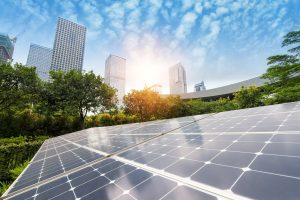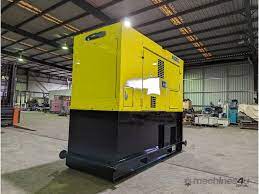Wind energy, as a clean and renewable power source, has gained substantial popularity in recent years as the world transitions towards sustainable and environmentally friendly energy solutions. Harnessing the kinetic energy of the wind to generate electricity presents numerous advantages, which are contributing to its increasing adoption and development.
1. Environmental Benefits
One of the most prominent advantages of wind energy is its positive impact on the environment. Unlike fossil fuels, wind energy production does not release harmful pollutants or greenhouse gases into the atmosphere. This reduces air pollution and helps combat climate change. By generating clean electricity, wind power significantly contributes to a reduction in carbon emissions, making it an environmentally responsible energy source.
2. Abundant and Renewable
Wind is an abundant and infinitely renewable resource. As long as the sun continues to shine and the Earth has an atmosphere, there will be wind to harness for power generation. This makes wind energy a sustainable and inexhaustible energy source, which stands in stark contrast to finite fossil fuels that deplete over time.
3. Cost-Effective Energy Production
Advancements in wind turbine technology and economies of scale have made wind energy increasingly cost-effective. The initial investment in wind turbines and infrastructure is substantial, but the operational costs are relatively low. Once installed, wind turbines have a long lifespan and require minimal ongoing maintenance. As a result, the cost of electricity generated by wind power has become highly competitive with conventional sources.
4. Job Creation
The wind energy industry has created job opportunities and economic growth in regions with wind farms. Jobs are available in manufacturing, installation, maintenance, and operations of wind turbines. This provides employment for local communities and contributes to the development of a skilled workforce in the renewable energy sector.
5. Energy Independence
Wind energy contributes to energy independence by diversifying a nation’s energy mix. Relying less on fossil fuels and imported energy sources enhances energy security and reduces vulnerability to supply disruptions. This is particularly valuable in regions dependent on energy imports.
6. Scalability
Wind energy projects can be scaled to match the energy needs of various communities and regions. Small-scale turbines can power individual homes, while large wind farms can generate electricity for entire cities. The flexibility of wind energy’s scalability makes it adaptable to different requirements.
7. Reduced Water Usage
Unlike many traditional power generation methods, such as coal and nuclear power plants, wind turbines do not require large volumes of water for cooling or steam generation. This can be especially beneficial in areas prone to water scarcity and drought.
8. Low Operating Costs
Wind turbines have lower operating and maintenance costs compared to some other energy sources. Once installed, they require minimal ongoing expenses, which can contribute to stable and predictable energy prices over the long term.
9. Technological Advancements
The wind energy industry is continually evolving and innovating. Technological advancements, such as taller and more efficient turbines, improved aerodynamics, and better energy storage solutions, are driving higher energy production and efficiency.
10. Local Economic Benefits
Wind energy projects provide economic benefits to local communities through tax revenue and land lease payments. These funds can be invested in community development and infrastructure.
11. Grid Stability
Wind energy can contribute to grid stability when integrated with other sources of energy. As part of a diversified energy mix, wind power helps balance the grid and reduces the risk of power outages.
Conclusion
Wind energy offers a multitude of advantages, including environmental benefits, sustainability, cost-effectiveness, job creation, energy independence, scalability, reduced water usage, low operating costs, ongoing technological advancements, local economic benefits, and contributions to grid stability. Its status as a clean, renewable, and abundant energy source positions it as a crucial player in the transition to a more sustainable and environmentally responsible energy future.
The ongoing development of wind energy technology, combined with increasing public awareness of the environmental impacts of fossil fuels, continues to drive the growth of wind power. As nations worldwide seek to reduce their carbon footprint and combat climate change, wind energy stands as a critical component of the global energy landscape.





